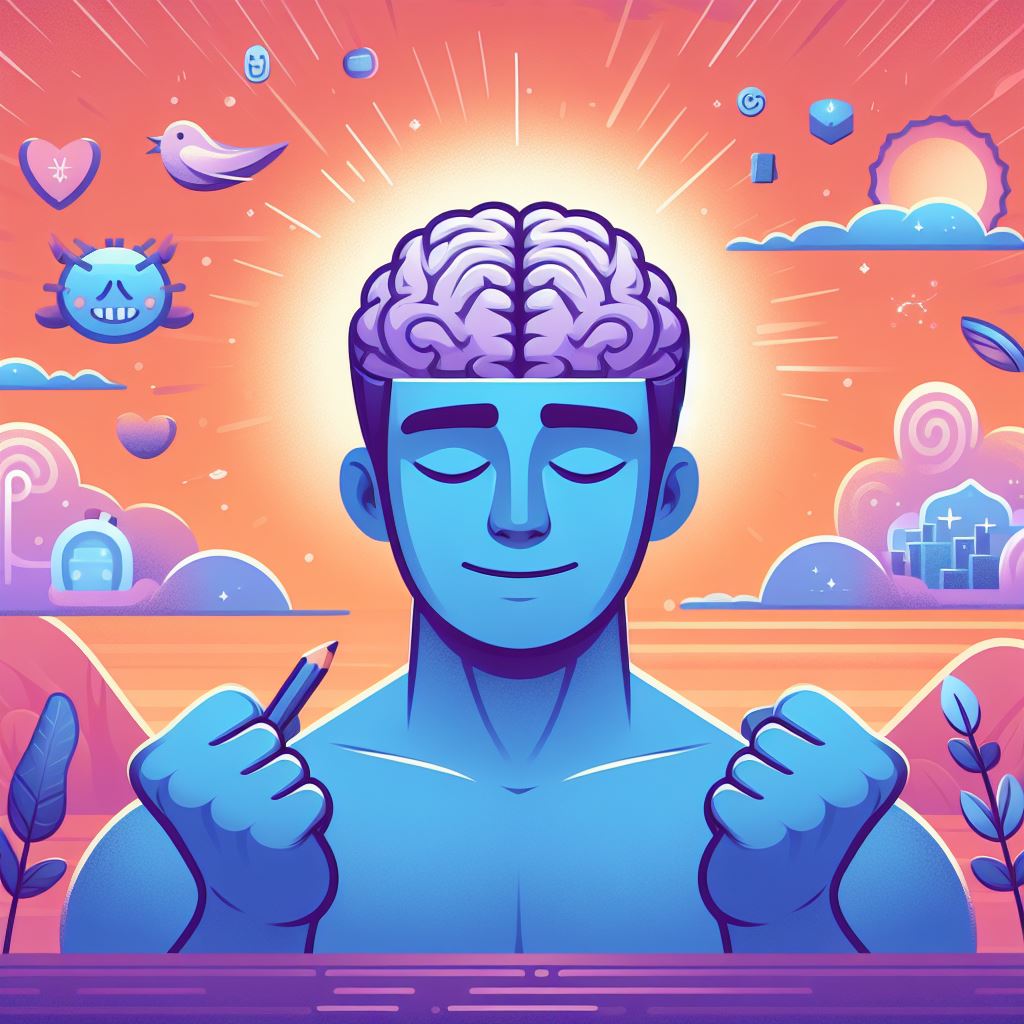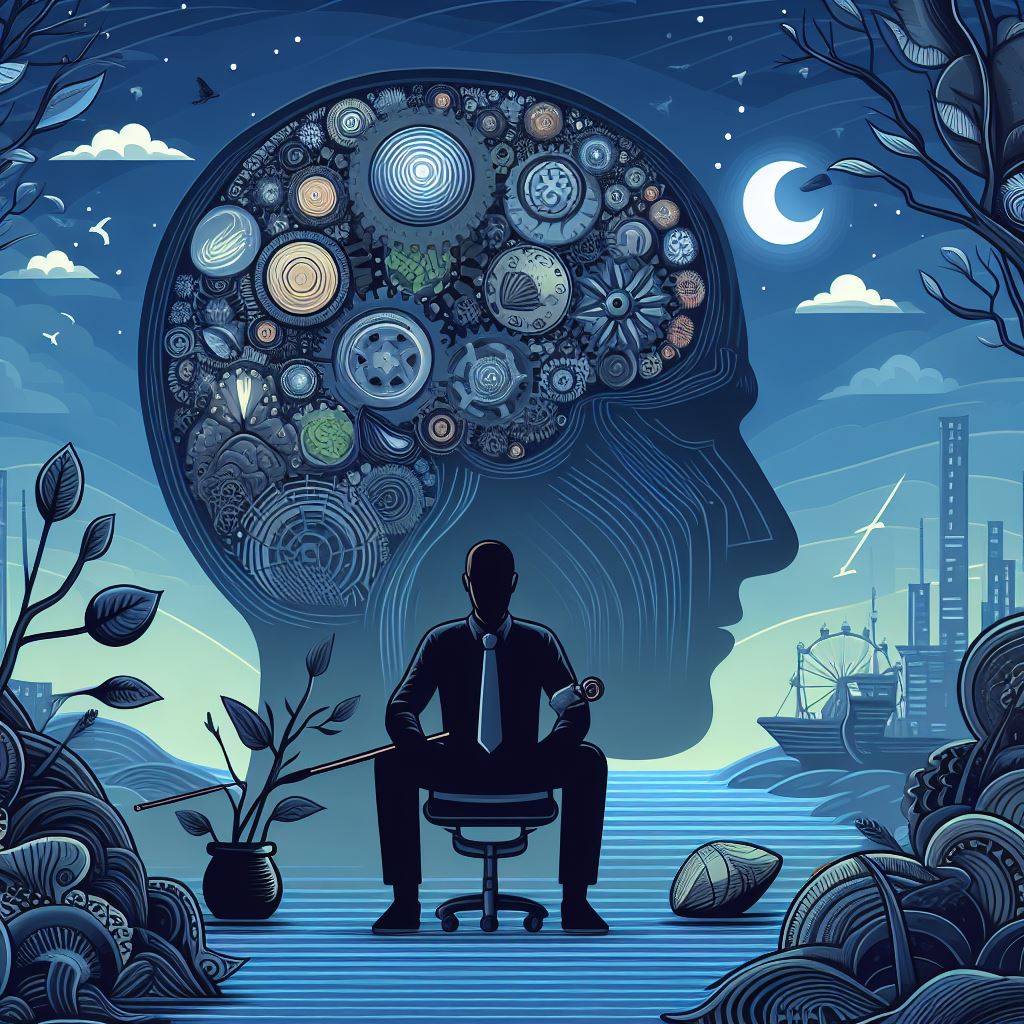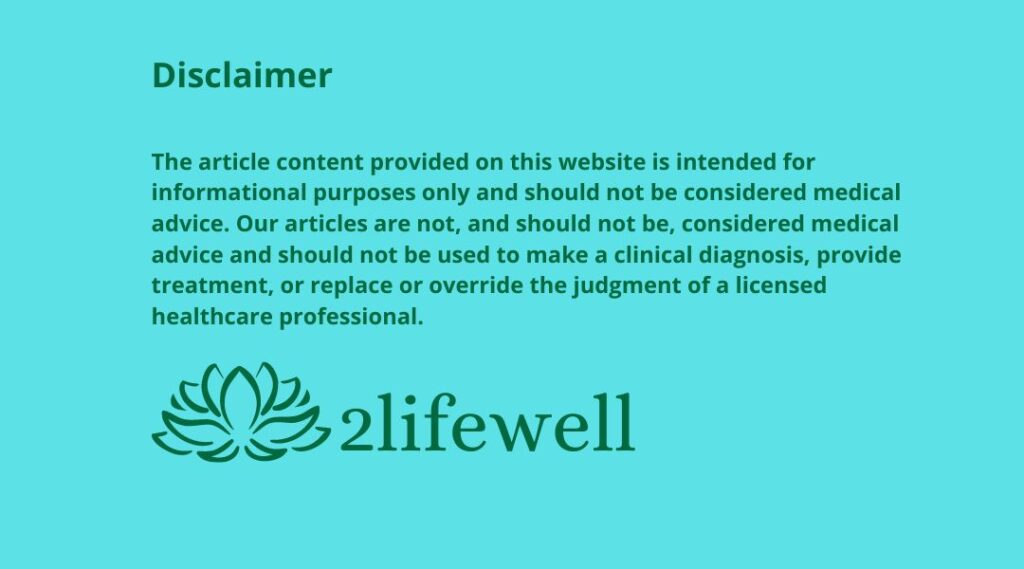
In today’s fast-paced world, where stress and distractions abound, finding moments of calm and clarity can be challenging. However, there’s a powerful tool that lies within each of us, waiting to be unlocked: creative visualization. Creative visualization is a practice that involves using the power of imagination to manifest our desires and goals. By vividly imagining our desired outcomes and experiences, we can harness the mind’s creative potential to bring about positive change in our lives.
In this article, we’ll explore the potential of creative visualization in achieving mental fulfillment. We’ll delve into the science behind visualization, examine its benefits for mental health and well-being, and discover practical techniques for incorporating visualization into our daily lives. Whether you’re seeking to reduce stress, enhance performance, or manifest your dreams, creative visualization offers a wealth of possibilities for personal growth and transformation.
Understanding Creative Visualization: An Introduction to the Power of Imagination
Creative visualization is a technique that involves picturing desired outcomes or experiences in the mind’s eye. By vividly imagining specific details and sensations, we activate the brain’s neural pathways associated with the desired outcome, making it more likely to manifest in reality. This powerful practice taps into the mind’s creative potential, allowing us to envision and manifest our goals with greater clarity and focus.
TIP: Start with small, achievable goals when practicing creative visualization. Use all of your senses to make your visualizations as vivid and immersive as possible.
The Science Behind Creative Visualization: How Mental Imagery Affects the Brain
Research has shown that the brain cannot distinguish between real experiences and those that are vividly imagined. When we engage in creative visualization, the brain activates the same neural networks as it would during the actual experience, resulting in physiological changes that support our desired outcomes. By regularly practicing visualization, we can rewire the brain, strengthen positive neural connections, and enhance our ability to manifest our goals.
TIP: Practice visualization exercises consistently to strengthen the neural pathways associated with your desired outcomes. Set aside dedicated time each day for visualization practice.
Harnessing the Power of Intention: Using Creative Visualization to Manifest Goals
Intention is a key component of effective visualization. By setting clear and specific intentions for what we want to manifest, we give direction to our creative energy and focus our attention on the desired outcome. When combined with visualization techniques, intention amplifies the power of our mental imagery, making it more likely to materialize in reality.
TIP: Write down your goals and intentions before beginning a visualization practice. Focus on the positive aspects of your desired outcome and visualize yourself already achieving it.
Exploring the Benefits of Creative Visualization for Mental Health and Well-being

Creative visualization offers a wide range of benefits for mental health and well-being. By engaging the imagination and focusing on positive outcomes, visualization can reduce stress, anxiety, and depression, promote relaxation and inner peace, and enhance overall feelings of well-being and fulfillment. Additionally, visualization can boost confidence, improve self-esteem, and increase motivation and resilience in the face of challenges.
TIP: Practice visualization techniques during times of stress or anxiety to promote relaxation and inner calm. Use visualization as a tool for building confidence and self-belief.
Techniques for Effective Creative Visualization: Tips for Getting Started
There are many techniques for practicing creative visualization, but the key is to find what works best for you. Some popular visualization techniques include guided imagery, mental rehearsal, and vision boards. Experiment with different techniques to discover which ones resonate with you and incorporate them into your daily routine for maximum effectiveness.
TIP: Set aside a dedicated time and space for visualization practice, free from distractions. Experiment with different visualization techniques to find what works best for you.
Creating Your Ideal Future: Using Visualization to Design Your Dream Life
One of the most powerful aspects of creative visualization is its ability to help us design and create our ideal future. By vividly imagining our goals and aspirations, we can clarify our desires, identify the steps needed to achieve them, and create a roadmap for success. Whether it’s a fulfilling career, loving relationships, vibrant health, or financial abundance, visualization can help us bring our dreams into reality.
TIP: Visualize your ideal future in specific detail, focusing on how it would look, feel, and sound. Use your imagination to explore different possibilities and scenarios, and trust that the universe will conspire to make your dreams a reality.
Overcoming Limiting Beliefs: Using Creative Visualization to Challenge Negative Thinking
Limiting beliefs are negative thoughts and beliefs that hold us back from achieving our full potential. They can undermine our confidence, sabotage our efforts, and prevent us from pursuing our goals. Creative visualization offers a powerful tool for overcoming limiting beliefs by challenging negative thinking patterns and replacing them with positive, empowering beliefs. By visualizing ourselves succeeding and achieving our goals, we can reprogram our subconscious mind and break free from the limitations that hold us back.
TIP: Identify and challenge your limiting beliefs by visualizing yourself overcoming obstacles and achieving your goals. Use affirmations and positive self-talk to reinforce your new empowering beliefs.
Enhancing Performance: How Athletes and Performers Use Visualization Techniques
Athletes and performers have long recognized the power of visualization in enhancing performance and achieving peak results. By mentally rehearsing their actions, visualizing success, and focusing on their desired outcomes, athletes and performers can improve their skills, build confidence, and optimize their performance on the field, stage, or court. Visualization techniques such as mental rehearsal, positive imagery, and outcome visualization can help athletes and performers overcome performance anxiety, boost motivation, and achieve their goals.
TIP: Practice visualization techniques before competitions or performances to prepare mentally and emotionally. Visualize yourself performing at your best and achieving your desired outcomes.
Creative Visualization for Stress Reduction and Relaxation: Finding Inner Peace Through Imagination
In today’s hectic world, stress has become a common and pervasive problem for many people. Fortunately, creative visualization offers a powerful antidote to stress by promoting relaxation, inner peace, and emotional well-being. By visualizing calming and tranquil scenes, such as a peaceful beach or a serene forest, we can activate the body’s relaxation response, reduce stress hormones, and induce a state of deep relaxation. Visualization can also help us release tension, quiet the mind, and cultivate a sense of inner peace and tranquility.
TIP: Practice visualization techniques as part of your daily relaxation routine. Set aside time each day to visualize calming scenes and allow yourself to relax fully.
Healing Through Visualization: Using Mental Imagery for Physical and Emotional Well-being
Creative visualization has been used for centuries as a powerful tool for healing and wellness. By visualizing the body’s natural healing processes, we can promote physical healing, reduce pain, and boost the immune system. Visualization can also be used to promote emotional healing by releasing negative emotions, processing trauma, and cultivating a sense of inner peace and well-being. Whether used on its own or in conjunction with other healing modalities, visualization can be a valuable tool for promoting overall health and wellness.
TIP: Practice visualization techniques to support your body’s natural healing processes. Visualize yourself healthy, vibrant, and full of energy.
Creating Vision Boards: A Practical Tool for Manifesting Your Dreams
Vision boards are a popular tool for manifesting dreams and goals through creative visualization. A vision board is a visual representation of your goals, aspirations, and desires, created by collaging images, words, and affirmations onto a board or poster. By compiling images and words that evoke the feelings and emotions associated with your goals, you can reinforce your intentions and amplify the power of your visualizations. Vision boards serve as a powerful reminder of your dreams and aspirations, helping to keep them top of mind and inspire action towards their achievement.
TIP: Create a vision board that reflects your dreams and aspirations, and place it in a prominent location where you’ll see it every day. Spend time each day visualizing yourself achieving your goals and embodying the feelings of success and fulfillment.
The Role of Affirmations in Creative Visualization: Amplifying Positive Intentions
Affirmations are positive statements or phrases that are repeated regularly to reinforce desired beliefs and outcomes. When combined with creative visualization, affirmations can amplify the power of your intentions and strengthen the neural pathways associated with your goals. By repeating affirmations during visualization practice, you can reprogram your subconscious mind, overcome limiting beliefs, and cultivate a mindset of success and abundance. Affirmations can be tailored to any area of your life, from health and wealth to relationships and personal growth, and can help you align your thoughts and actions with your desired outcomes.
TIP: Create a list of affirmations that reflect your goals and intentions, and incorporate them into your visualization practice. Repeat your affirmations regularly, with conviction and belief in their truth.
Combining Meditation and Visualization: Cultivating Presence and Awareness
Meditation and visualization are complementary practices that can enhance each other’s benefits and deepen your connection to yourself and the world around you. While meditation focuses on cultivating present-moment awareness and mindfulness, visualization allows you to create vivid mental images of your desired outcomes and experiences. By combining meditation and visualization, you can cultivate a state of deep presence and awareness while also harnessing the power of your imagination to manifest your goals. Visualization can be used as a focal point during meditation, allowing you to focus your attention and deepen your concentration, or as a standalone practice to explore and manifest your desires.
TIP: Incorporate visualization into your meditation practice by visualizing a peaceful scene or positive outcome during your meditation sessions. Use your imagination to explore the details of your visualization and evoke the feelings associated with your desired outcome.
Creative Visualization and the Law of Attraction: Attracting Abundance and Success
The Law of Attraction is a universal principle that states that like attracts like, and that our thoughts and beliefs have the power to shape our reality. Creative visualization is closely aligned with the Law of Attraction, as it involves focusing on positive outcomes and experiences to manifest our desires. By visualizing our goals with clarity, conviction, and belief in their attainment, we can attract the people, resources, and opportunities needed to bring them into reality. Creative visualization allows us to tap into the Law of Attraction and align our thoughts and intentions with the abundance and success we desire.
TIP: Practice creative visualization with a clear and unwavering belief in the Law of Attraction. Trust that the universe is working in your favor and that your desires are on their way to manifestation.
Using Guided Visualization Techniques: Harnessing the Power of Audio and Video Resources
Guided visualization is a form of visualization in which a narrator guides you through a series of mental images and scenarios, helping you to relax, focus your mind, and manifest your goals. Guided visualization can be done using audio recordings, video resources, or in-person sessions with a trained facilitator. These resources typically provide a structured framework for visualization, guiding you through the process step-by-step and incorporating relaxation techniques such as deep breathing and progressive muscle relaxation. Guided visualization can be particularly helpful for beginners or those who struggle to maintain focus during solo visualization practice.
TIP: Explore guided visualization resources such as audio recordings, meditation apps, or online videos to find a guided visualization practice that resonates with you. Set aside dedicated time each day to listen to a guided visualization and immerse yourself fully in the experience.
Visualization for Goal Setting: Turning Dreams into Achievable Objectives
Visualization can be a powerful tool for goal setting, helping us to clarify our desires, set actionable objectives, and create a roadmap for success. By visualizing our goals with clarity and specificity, we can activate the subconscious mind, align our thoughts and actions with our desired outcomes, and increase our motivation and commitment to achieving them. Visualization allows us to explore different scenarios and possibilities, identify potential obstacles, and develop strategies for overcoming them. Whether you’re setting goals for personal growth, career advancement, or health and wellness, visualization can help you turn your dreams into achievable objectives.
TIP: Use visualization to create a mental image of your desired outcome, focusing on the specific details and sensations associated with achieving your goal. Break down your goal into actionable steps and visualize yourself taking each step with confidence and determination.
Visualization for Problem Solving: Unlocking Creative Solutions
Visualization can also be a valuable tool for problem-solving, allowing us to tap into our creative potential and explore innovative solutions to challenges and obstacles. By visualizing the problem or challenge in detail, we can gain insight into its underlying causes, identify potential solutions, and envision the steps needed to overcome it. Visualization encourages us to think outside the box, explore different perspectives, and generate new ideas and possibilities. Whether you’re facing a personal or professional challenge, visualization can help you unlock creative solutions and move forward with confidence and clarity.
TIP: When faced with a problem or challenge, take some time to visualize the situation from different angles. Imagine yourself overcoming the challenge and achieving a successful outcome. Use visualization to brainstorm ideas and explore creative solutions.
Visualization for Emotional Healing: Releasing Negative Emotions and Cultivating Inner Peace
Visualization can be a powerful tool for emotional healing, allowing us to release negative emotions, process trauma, and cultivate a sense of inner peace and well-being. By visualizing ourselves in a state of calm and tranquility, surrounded by love and support, we can soothe our nervous system, reduce stress hormones, and promote emotional healing. Visualization can also help us reframe negative experiences, shift our perspective, and cultivate a mindset of gratitude and acceptance. Whether you’re dealing with past trauma, grief, or anxiety, visualization can help you find healing and inner peace.
TIP: Practice visualization techniques to release negative emotions and cultivate a sense of inner peace and well-being. Visualize yourself surrounded by love, light, and healing energy, and allow yourself to experience a deep sense of relaxation and tranquility.
Visualization for Confidence and Self-Esteem: Cultivating a Positive Self-Image
Visualization can be a powerful tool for building confidence and self-esteem, allowing us to cultivate a positive self-image and belief in our abilities. By visualizing ourselves succeeding, achieving our goals, and overcoming obstacles, we can boost our confidence, increase our self-esteem, and develop a resilient mindset. Visualization encourages us to focus on our strengths, talents, and achievements, rather than dwelling on our weaknesses or perceived limitations. Whether you’re preparing for a job interview, giving a presentation, or pursuing a personal goal, visualization can help you approach challenges with confidence and self-assurance.
TIP: Use visualization to visualize yourself succeeding in specific areas of your life, such as your career, relationships, or personal development. Focus on the feelings of confidence, competence, and self-assurance that come with achieving your goals.
Making Visualization a Daily Habit: Incorporating Visualization into Your Routine
To reap the full benefits of visualization, it’s important to make it a regular part of your daily routine. Set aside dedicated time each day to practice visualization, whether it’s first thing in the morning, during your lunch break, or before bed. Create a quiet and comfortable space where you can relax and focus your mind, free from distractions. Start with just a few minutes of visualization each day and gradually increase the duration as you become more comfortable with the practice. With consistent practice, visualization can become a powerful tool for personal growth, transformation, and fulfillment.TIP: Schedule visualization practice into your daily routine, just like you would with exercise or meditation. Set aside dedicated time each day to visualize your goals, dreams, and aspirations, and watch as they begin to manifest in your life.
Books:
- “Creative Visualization: Use the Power of Your Imagination to Create What You Want in Your Life” – Shakti Gawain – https://amzn.to/3XnAEPq
- Gawain introduces creative visualization techniques to manifest positive life changes and achieve mental fulfillment.
- “The Power of Your Subconscious Mind” – Joseph Murphy – https://amzn.to/3XESBdm
- Murphy explores how creative visualization can be used to program the subconscious mind and achieve personal goals and mental fulfillment.
- “The Artist’s Way: A Spiritual Path to Higher Creativity” – Julia Cameron – https://amzn.to/3TkYIBa
- Cameron offers a guide to unlocking creativity and using creative visualization as a tool for self-discovery and personal fulfillment.
- “Visualization for Weight Loss: The Gabriel Method Guide to Using Your Mind to Transform Your Body” – Jon Gabriel – https://amzn.to/4cZMcOG
- Gabriel explores how creative visualization can be used to support weight loss and promote a healthy relationship with your body and mind.
- “The Creative Visualization Workbook: Use the Power of Your Imagination to Create What You Want in Life” – Shakti Gawain – https://amzn.to/47mO6HO
- A practical workbook that accompanies “Creative Visualization”, providing tools for incorporating creative visualization into daily life.
Scientific articles:
- “The Effect of Mental Imagery on Athletic Performance: A Systematic Review” – Slimani et al. (2016)
- This systematic review examines the impact of mental visualization on athletic performance, highlighting its potential to improve performance and confidence.
- “Effects of Mental Imagery on Muscular Strength in Healthy and Patient Participants: A Systematic Review” – Drury et al. (2021)
- Systematic review investigating the effects of mental visualization on muscle strength in healthy individuals and patients, offering insights into its therapeutic potential.
- “Mental Imagery for Musicians: A Review of the Literature” – Pascual-Leone et al. (2019)
- This article reviews studies on the use of mental visualization by musicians, highlighting its benefits for musical performance and creative expression.
- “The Use of Mental Imagery in Cognitive Therapy: A Systematic Review” – Hackmann et al. (2011)
- Systematic review examining the use of mental visualization in cognitive therapy, showing its potential to assist in the treatment of mental disorders and promote emotional well-being.
- “Mental Imagery and Creativity: A Meta-Analytic Review Study” – Lebuda et al. (2019)
- Meta-analysis investigating the relationship between mental visualization and creativity, offering insights into how visualization can stimulate creative processes and promote mental fulfillment.
Book Chapters:
- “Handbook of Imagination and Mental Simulation” – Chapter on creative visualization and mental health by Kosslyn et al. (2018) – https://amzn.to/3TozYb7
- Offers a comprehensive look at using creative visualization to promote mental well-being and achieve fulfillment.
- “The Oxford Handbook of Spontaneous Thought: Mind-Wandering, Creativity, and Dreaming” – Chapter on creative visualization and creativity by Fox et al. (2018) – https://amzn.to/3MCV9m6
- Explores the relationship between creative visualization, spontaneous thinking, and creativity, offering insights into how to cultivate creativity to achieve mental fulfillment.

